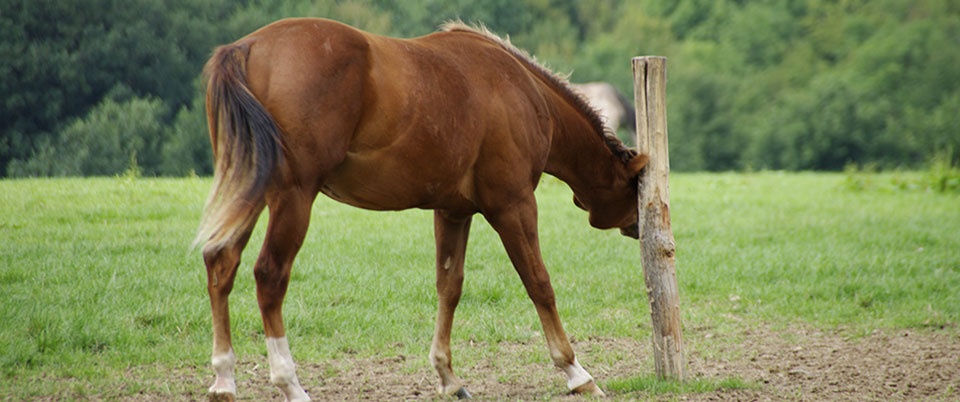Also known as Queensland Itch, Seasonal Recurrent Dermatitis (SSRD), Summer Itch or more technically, Culicoides Hypersensitivity – Sweet Itch is the most common skin allergy and affects around 5% of horses in the UK.
Sweet itch is an equine hypersensitivity reaction to biting insects. In the UK these are the black fly (Simulium) and the midge (Culicoides), which are active from March to November and, the main symptom is itching of the mane, base of the tail, and under the belly. The problems starts out in the summer months but worsens over time until it eventually effects the horse/ pony all year round.
Signs & Symptoms
The sooner you get on top of the problem the easier it is to manage and the less discomfort your horse or pony will experience. Noticing symptoms right away will also prevent complications, such as the infection of open wounds and permanent skin damage. The following are a list of the most common signs and symptoms of Sweet Itch and, if you notice any of these you should contact your veterinarian right away for a professional diagnosis:
Mild to severe itching and rubbing, usually along the mane, back and tail
Loss of tail and mane hair
Bald patches, which can look ugly and grey due to permanent hair loss and skin damage
Areas of sore, open, broken skin, which tend to bleed
In some cases, itching along the legs and under the belly
Treatment and Prevention
As an allergy, there is no cure for sweet itch. The best way to treat and manage Sweet Itch is therefore by preventing the midges/ flies from biting the skin, and soothing any bites which have already occurred.
1. Call your vet to investigate your horse’s skin problem. There are a large number of causes of equine skin diseases, such as fungal (ringworm), bacterial (rainscald), parasitic (lice, mange), as well as allergic reactions to bedding, insect bites, dust mites and pollens.
2. Use insect repellents regularly to minimise attack from biting insects.
3. Use a fly sheet to help avoid contact with the biting insects.
4. Install a ceiling fan in the stable – midges can’t fly if the wind speed is over 5mph.
5. Apply a fly screen to the stable door.
6. Use topical oils to discourage midges and black flies from landing on the skin and feeding.
7. Move your horse to a windy hillside where there is less chance of encountering biting insects.
If the skin has already been bitten/ broken then the next step is to minimise any itching and irritation. Steroids are often used to relive irritation, but unless the biting stops in the first place, the problem is likely to reoccur as soon as this treatment stops. Steroids are not the only option available to make the horse more comfortable whilst the bites clear and the preventative measures set in. Soothing shampoos, rub and sprays are also very effective at relieving itchy, irritated skin.
However, it is important to note that flies and midges are not the only possible cause of itchy and irritated skin. There are a large number of causes of equine skin diseases, such as fungal (ringworm), bacterial (rainscald), parasitic (lice, mange), as well as allergic reactions to bedding, insect bites, dust mites and pollens, so it is important to have the condition properly diagnosed to make sure a horse is being treated and managed for the right thing.

